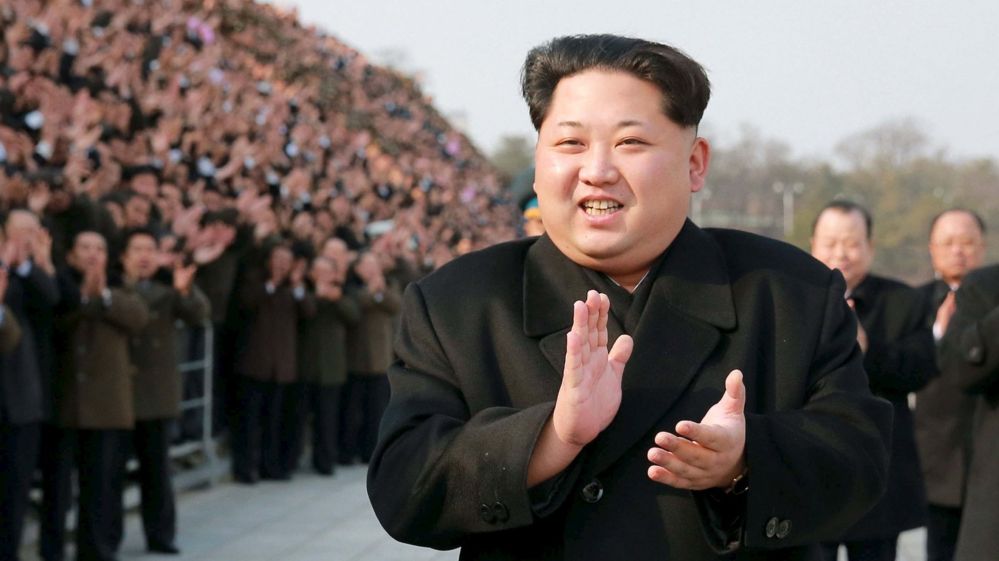
North Korea conducted another ballistic missile test early Monday, drawing condemnation from South Korea and Japan just days after world leaders urged Kim Jong Un to abandon his nuclear weapons program.
The missile, which appears to be a Scud variant, was fired at 5:39 a.m. from Wonsan off North Korea’s east coast and flew 450 kilometers (280 miles) toward Japan, according to South Korean military officials. It may have reached waters in Japan’s exclusive economic zone, Japanese Chief Cabinet Secretary Yoshihide Suga said.
The provocation — the ninth this year — came two days after the Group of Seven nations pledged to “strengthen measures” aimed at prompting North Korea to cease nuclear and ballistic missile tests. World leaders are grappling with how to halt provocations by the isolated nation, with South Korea’s President Moon Jae-in seeking engagement while U.S. President Donald Trump and Japanese Prime Minister Shinzo Abe take a harder line.
Japan said the missile landed about 300 kilometers from the Oki islands off the nation’s west coast. Kim may have deliberately fired it toward waters that are claimed by both Japan and South Korea to foment discord between the nations and undermine cooperation with the U.S., according to Jeffrey Lewis, director of the East Asia Nonproliferation Program at the Middlebury Institute of International Studies at Monterey, California.
Disputed Area
“It’s Moon’s move now, but I expect he will be angrier about Japan claiming the EEZ than North Korea launching the missile,” Lewis said. “I don’t think North Korea has put a missile into the disputed area before, so I doubt this is a coincidence. It is intended to undermine trilateral security cooperation among the U.S., Japan and South Korea.”
South Korea strongly condemns the launch and will “respond firmly,” the foreign ministry said in a statement. It’s the third test since Moon came to office earlier this month promising a two-track approach of sanctions and dialogue with Kim’s regime to bring peace to the peninsula.
“To make these frequent provocations since the new administration took office constitutes a direct refusal of our request for denuclearization and peace on the Korean Peninsula, and goes against the united will of the international community, as shown in the G-7 declaration two days ago,” the ministry said.
South Korean financial markets had a muted reaction to the test. The Kospi index of shares fell 0.1 percent from a record in Seoul. The won was little changed against the dollar.
Read more on North Korea’s nuclear ambitions
Trump has been briefed on the launch, a U.S. National Security Council spokesman said. The president has said military force remains an option to deal with North Korea, as Kim ramps up his efforts to become able to deliver a nuclear warhead as far as North America.
In an interview on Sunday, Defense Secretary James Mattis explained what’s at stake if diplomacy fails and tensions with North Korea boil over into war.
A conflict in North Korea “would be probably the worst kind of fighting in most people’s lifetimes,” Mattis said on CBS’s “Face the Nation.” “The North Korean regime has hundreds of artillery cannons and rocket launchers within range” of Seoul, he said.
The latest missile test didn’t pose a threat to North America, the U.S. Pacific Command said in an emailed statement.
Abe said Japan is preparing steps with the U.S. to deter Kim’s regime from repeating provocations. Japan’s leader, who hailed the G-7’s discussion of North Korea in Sicily, said the summit confirmed that the issue is one of the top priorities in the international community.
Recent Tests
North Korea tested a rocket on May 14 that it said could carry a “large-size heavy nuclear warhead” over long distances. The Hwasong-12 was estimated to have a range of at least 4,500 kilometers, putting it within reach of U.S. military facilities on the island of Guam.
A week later, it fired a medium-range Pukguksong-2, which Kim has approved for deployment and mass production, according to the state-controlled news agency KCNA. The missile is powered by solid fuel, potentially making it easier to fire quickly from a mobile launcher that could avoid detection.
Trump has sought more help from China to rein in its neighbor and ally. Acting Assistant Secretary of State Susan Thornton on Friday acknowledged China’s efforts such as banning North Korean coal imports and tightening border controls, while adding that “they clearly have to do more.”
Chinese State Councilor Yang Jiechi is scheduled to arrive in Tokyo on Monday for talks with Shotaro Yachi, the head of the National Security Council, Japan’s foreign ministry said in a statement.
North Korea has so far this year refrained from conducting a nuclear test. The isolated nation has performed five nuclear trials since 2006, three of which took place under Kim, who took power after the death of his father Kim Jong Il in 2011.
